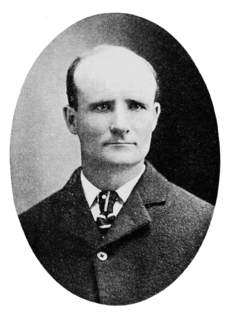
John Bell Hatcher was an American paleontologist and fossil hunter known as the "king of collectors" and best known for discovering Torosaurus and Triceratops , two genera of dinosaurs described by Othniel Charles Marsh. He was part of a new, professional middle class in American science, having financed his education with his labor while also being more educated than older fossil collectors. As such, he faced unique challenges throughout his long and productive career.

Othniel Charles Marsh was an American paleontologist.

William Diller Matthew FRS was a vertebrate paleontologist who worked primarily on mammal fossils, although he also published a few early papers on mineralogy, petrological geology, one on botany, one on trilobites, and he described Tetraceratops insignis, which was much later suggested to be the oldest known therapsid.
Oliver Perry Hay was an American herpetologist, ichthyologist, and paleontologist.

Richard Swann Lull was an American paleontologist and Sterling Professor at Yale University who is largely remembered now for championing a non-Darwinian view of evolution, whereby mutation(s) could unlock presumed "genetic drives" that, over time, would lead populations to increasingly extreme phenotypes.
Mary R. Dawson is a vertebrate paleontologist and curator emeritus at the Carnegie Museum of Natural History in Pittsburgh, Pennsylvania.

Charles Mortram Sternberg (1885–1981) was an American-Canadian fossil collector and paleontologist, son of Charles Hazelius Sternberg. Late in his career, he collected and described Pachyrhinosaurus, Brachylophosaurus, Parksosaurus and Edmontonia. A contemporary author wrote, "No published study of Canadian dinosaurs is possible today without citing one or another of Sternberg's papers."

Charles Whitney Gilmore was an American paleontologist who gained renown in the early 20th century for his work on vertebrate fossils during his career at the United States National Museum. Gilmore named many dinosaurs in North America and Mongolia, including the Cretaceous sauropod Alamosaurus, Alectrosaurus, Archaeornithomimus, Bactrosaurus, Brachyceratops, Chirostenotes, Mongolosaurus, Parrosaurus, Pinacosaurus, Styracosaurus ovatus and Thescelosaurus.
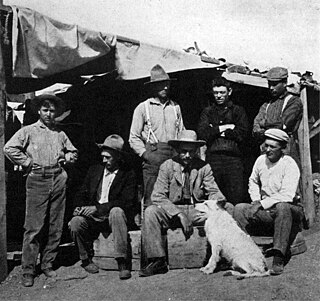
Walter Willis Granger was an American vertebrate paleontologist who participated in important fossil explorations in the United States, Egypt, China and Mongolia.
Remington Kellogg was an American naturalist and a director of the United States National Museum.
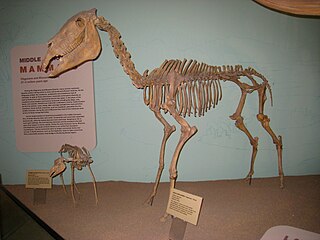
The Hagerman horse, also called the Hagerman zebra or the American zebra, was a North American species of equid from the Pliocene epoch and the Pleistocene epoch. It was one of the oldest horses of the genus Equus and was discovered in 1928 in Hagerman, Idaho. It is the state fossil of Idaho.

Malcolm Carnegie McKenna (1930–2008) was an American paleontologist and author on the subject.
Xiaoming Wang is a noted vertebrate paleontologist and geologist born in People's Republic of China and now living and teaching in the United States.

Stanley John Olsen was an American vertebrate paleontologist and one of the founding figures of zooarchaeology in the United States. Olsen was also recognized as an historical archaeologist and scholar of United States military insignia, especially buttons of the American Colonial through Civil War periods. He was the father of John W. Olsen.
Claude W. Hibbard, popularly known as Hibbie, was an American paleontologist.
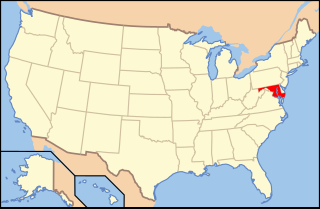
Paleontology in Maryland refers to paleontological research occurring within or conducted by people from the U.S. state of Maryland. The invertebrate fossils of Maryland are similar to those of neighboring Delaware. For most of the early Paleozoic era, Maryland was covered by a shallow sea, although it was above sea level for portions of the Ordovician and Devonian. The ancient marine life of Maryland included brachiopods and bryozoans while horsetails and scale trees grew on land. By the end of the era, the sea had left the state completely. In the early Mesozoic, Pangaea was splitting up. The same geologic forces that divided the supercontinent formed massive lakes. Dinosaur footprints were preserved along their shores. During the Cretaceous, the state was home to dinosaurs. During the early part of the Cenozoic era, the state was alternatingly submerged by sea water or exposed. During the Ice Age, mastodons lived in the state.

Paleontology in Missouri refers to paleontological research occurring within or conducted by people from the U.S. state of Missouri. The geologic column of Missouri spans all of geologic history from the Precambrian to present with the exception of the Permian, Triassic, and Jurassic. Brachiopods are probably the most common fossils in Missouri.

The Raymond M. Alf Museum of Paleontology is part of The Webb Schools and is the only nationally accredited museum of paleontology on a secondary school campus in the United States. The museum has two circular 4,000 sq. ft. exhibition halls and 20,000 unique annual visitors. The collections number about 140,000 specimens, 95% of which were found by Webb students on fossil-collecting trips called “Peccary Trips,” expeditions usually centered in California, Utah, and Montana. The collections consist primarily of vertebrate, invertebrate, and track fossils and the museum's large track collection is widely recognized as one of the most diverse in the world.
Jane Colwell-Danis is the first formally-trained female vertebrate paleontologist employed in Canada and was known for finding numerous rare fossils in the southern Canadian prairies.
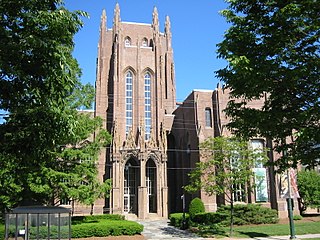
The Peabody Museum of Natural History at Yale University is among the oldest, largest, and most prolific university natural history museums in the world. It was founded by the philanthropist George Peabody in 1866 at the behest of his nephew Othniel Charles Marsh, the early paleontologist. Most known to the public for its Great Hall of Dinosaurs, which includes a mounted juvenile Brontosaurus and the 110-foot (34 m) long mural The Age of Reptiles, it also has permanent exhibits dedicated to human and mammal evolution; wildlife dioramas; Egyptian artifacts; and the birds, minerals and Native Americans of Connecticut.





















